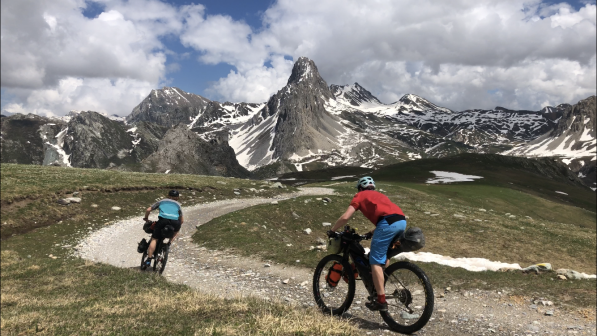Group test: Cycling cameras

Today’s action cameras produce better quality video than ever and are increasingly easy to use. So it’s no surprise that more and more cyclists are fitting them to their bikes. For some it’s a way to record ride highlights to post online (vlogging).
For others it’s a way to capture the low points of the daily commute – those all-too-common occurrences of bad driving. In any road incident, one of the first questions the police will ask is whether you have video footage.
Wading through tech specs and marketing claims to work out what sort of camera will best suit your needs can be hard. As you’ll see from this test, some models fall well short of expectations when it comes to real-life use. To give you an insight into what to look for and what to avoid, this test features cameras from different categories: front and rear safety cameras, a classic action camera and a micro camera.
It would take another article to explain how to edit and share camera footage but it’s worth noting here that video files require a lot of storage space. If there isn’t enough on your home computer (or, potentially, your phone), you’ll need to consider an external drive or cloud storage.
1 GoPro Hero 10
Price: £349.99. Available from: GoPro.

The Hero 10 has been superseded by the 11 now but it remains available and the main points haven’t changed. It’s tough, with a waterproof design, excellent image stabilisation and simple menus. Image quality is very good, and front and rear screens make composition and playback easy.
The GoPro Quick app lets you edit easily on your phone. Its 80-minute ‘Enduro’ battery life is reasonable, and it uses standard Micro SD cards for storage. The three tab ‘GoPro mount’ has become an industry standard. Wind noise can be an issue, which is why my personal example has foam mufflers over the microphones. There’s no specific ‘safety mode’ for crash detection.
Weight: 164g.
Size: 70×50×32mm.
Verdict: Super tough, easy-to-use action camera benchmark.
2 Insta360 GO 2 32GB
Price: £294.99. Available from: Insta360.

The big advantage of the GO 2 is its small size and low weight. A reasonably secure magnetic mounting system, plus a huge range of bike options, makes it easy to stick anywhere on your bike, helmet, bags or clothing; there’s also a pendant option. Despite its size the camera’s 1080p footage is very good, with outstanding image stabilisation.
The clamshell case for the camera acts as a recharge battery, basic control screen and flip-out mini tripod. Battery life is short, which rules it out as a ‘safety cam’, and wind noise is hard to muffle.
There’s no way of seeing what the GO 2 sees without connecting to the Insta360 app on your phone via built-in wi-fi.
Weight: 45g (inc mount).
Size: 50×20×22mm.
Verdict: Ingenious, ultra-compact quality but short battery life.
3 Garmin Varia RCT715
Price: £299.99. Available from: Garmin.

Garmin’s top-of-the-range Varia RCT715 combines a warning radar, 65-lumen rear light and 1080p safety camera in a single package. The radar provides visual and audio alerts of traffic approaching behind on a Garmin head unit, and the rear light shines brighter as cars approach.
Recent updates have solved some of the image stability issues so the 1080p footage will capture close number plates cleanly enough at medium speeds. Runtime is less than 90 minutes in constant mode.
The footage handling is poor – finding and downloading the footage you want via the Varia phone app is awkward and slow. Its seatpost-only mount may rule out use of a saddlebag.
Weight: 218g (inc mount).
Size: 107×42×32mm.
Verdict: Camera is the weakest part of this expensive combo unit.
4 Cycliq Fly 12 CE
Price: £279. Available from: Cycliq.

The Fly 12 CE is a front light/safety camera with a 600-lumen max output, plus flash and pulse modes. (Cycliq also makes a 400-lumen Fly 12 Sport, which is lighter, and a Fly 6 rear light/camera similar to the Garmin Varia.)
Runtime is around two hours in the max power/constant camera setting, but the phone and desktop apps let you select lower power settings for longer life. The 1080p camera has decent image stability for bumpier roads but it’s not as sharp as the updated Varia so you’ll be squinting and zooming to decipher number plates even five metres away.
It’s not good enough for enjoyable action footage. You can only view the videos by downloading to a PC.
Weight: 214g (inc mount).
Size: 85×53×31mm.
Verdict: Adequate but pricy safety camera and front light combo.
Overall verdict
The image capture of the updated Varia is better than expected but it’s still only adequate, and sifting through its individual files and downloading them is appallingly slow. The footage from the Cycliq can only be downloaded to a PC rather than viewed through the app, and it’s at best adequate even in good conditions.
The GoPro 10 and Insta360 GO 2 are leagues ahead in terms of app functionality, footage download, ease of use, range of mounts/mounting positions and camera/capture options. They’re reliable and weather/impact resilient, so for ‘non-safety’ use, it’s just a case of picking which of those two suits your needs in terms of size, runtime and screen/no screen features.


